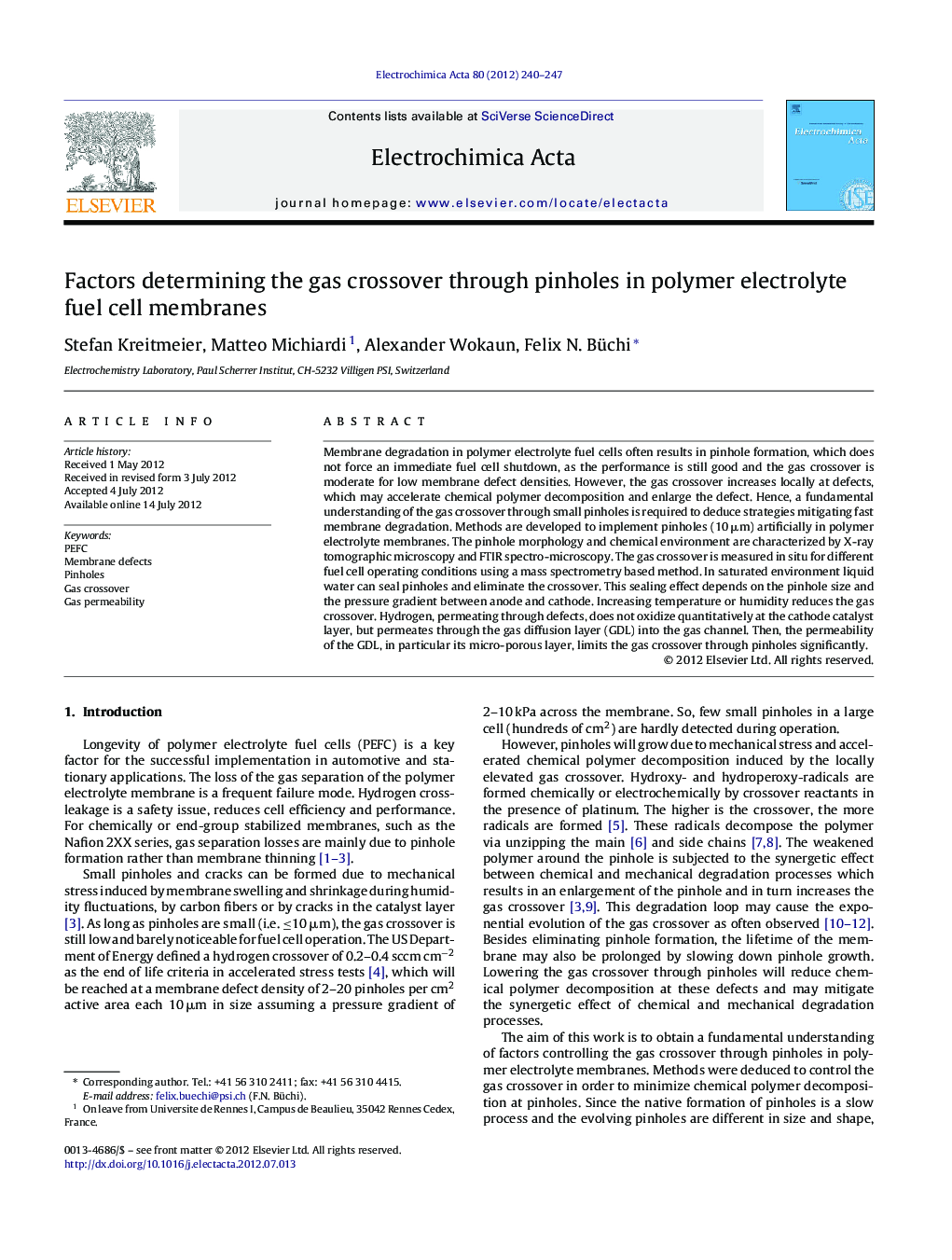| کد مقاله | کد نشریه | سال انتشار | مقاله انگلیسی | نسخه تمام متن |
|---|---|---|---|---|
| 187895 | 459649 | 2012 | 8 صفحه PDF | دانلود رایگان |

Membrane degradation in polymer electrolyte fuel cells often results in pinhole formation, which does not force an immediate fuel cell shutdown, as the performance is still good and the gas crossover is moderate for low membrane defect densities. However, the gas crossover increases locally at defects, which may accelerate chemical polymer decomposition and enlarge the defect. Hence, a fundamental understanding of the gas crossover through small pinholes is required to deduce strategies mitigating fast membrane degradation. Methods are developed to implement pinholes (10 μm) artificially in polymer electrolyte membranes. The pinhole morphology and chemical environment are characterized by X-ray tomographic microscopy and FTIR spectro-microscopy. The gas crossover is measured in situ for different fuel cell operating conditions using a mass spectrometry based method. In saturated environment liquid water can seal pinholes and eliminate the crossover. This sealing effect depends on the pinhole size and the pressure gradient between anode and cathode. Increasing temperature or humidity reduces the gas crossover. Hydrogen, permeating through defects, does not oxidize quantitatively at the cathode catalyst layer, but permeates through the gas diffusion layer (GDL) into the gas channel. Then, the permeability of the GDL, in particular its micro-porous layer, limits the gas crossover through pinholes significantly.
► Small defects (10 μm) do not decrease the fuel cell performance.
► The gas diffusion electrode controls the gas crossover through defects.
► Hydrogen permeating through defects is not oxidized quantitatively at the catalyst.
► Liquid water can fill and seal defects and eliminate the gas crossover.
Journal: Electrochimica Acta - Volume 80, 1 October 2012, Pages 240–247